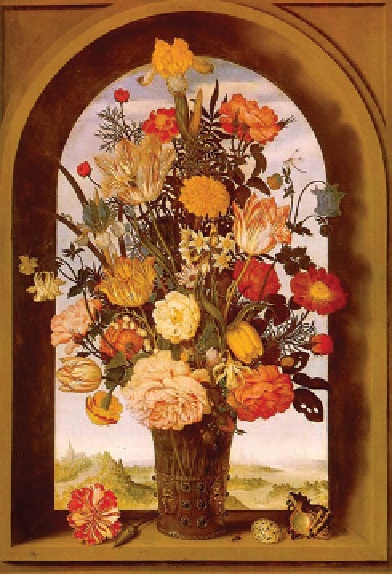Agriculture Reference
In-Depth Information
Fig. 11.4
Vases of flowers
from the Baroque and Dutch-
Flemish periods, displaying
a wide variety of cut flowers
preferred during this time.
Flowers in a Niche, Ambro-
sius Bosschaert (1614-1654),
The Hague, Holland, inv.
Nr. 679
the home during the Federalist, Greek Revival and Art Nouveau periods (Marcus
1952
; Benz
1960
; Schmutzler
1962
; Warren
1972
; Anon
1997
). In the Victorian
Era, the Language of Flowers enhanced floral symbolism with the use of flowers
and floral arrangements to send unspoken messages to the recipient. Current floral
symbolisms abound and may be specific to particular cultures or countries rather
than having a wider global meaning. For instance, red roses are indicative of pas-
sionate love, particularly for St. Valentine's Day (February 14), yellow for devotion
and pink coloured flowers indicate a lesser interest.
Historic uses of flowers and their popularity have influenced current day usage. For
instance, while there are thousands of flowering plant species and cultivars on the cut
flower market, only a few are used widely for floral designing: rose, chrysanthemum,
carnation, lily, gladiolus, and orchid are among some of the examples. All of these
have been used since ancient times in China, Egypt, Rome, and Greece and largely
due to their wide adaptability to cultivation in different environments, long vase and
garden life, and their ability to be shipped long distances without a loss of integrity.
Around the world, modern countries have chosen their National Flower as a
national symbol. During the National Day (of independence or unification) these
flowers are promoted and printed on flags and other emblems. For instance, the
rose is the national flower for several countries, i.e. England, the USA, Ecuador,
Bulgaria, Iraq, Iran, the Czech Republic, and Slovakia (Fig.
11.5
). The tulip is the
National Flower for the Netherlands, Hungary and Turkey while the chrysanthe-

